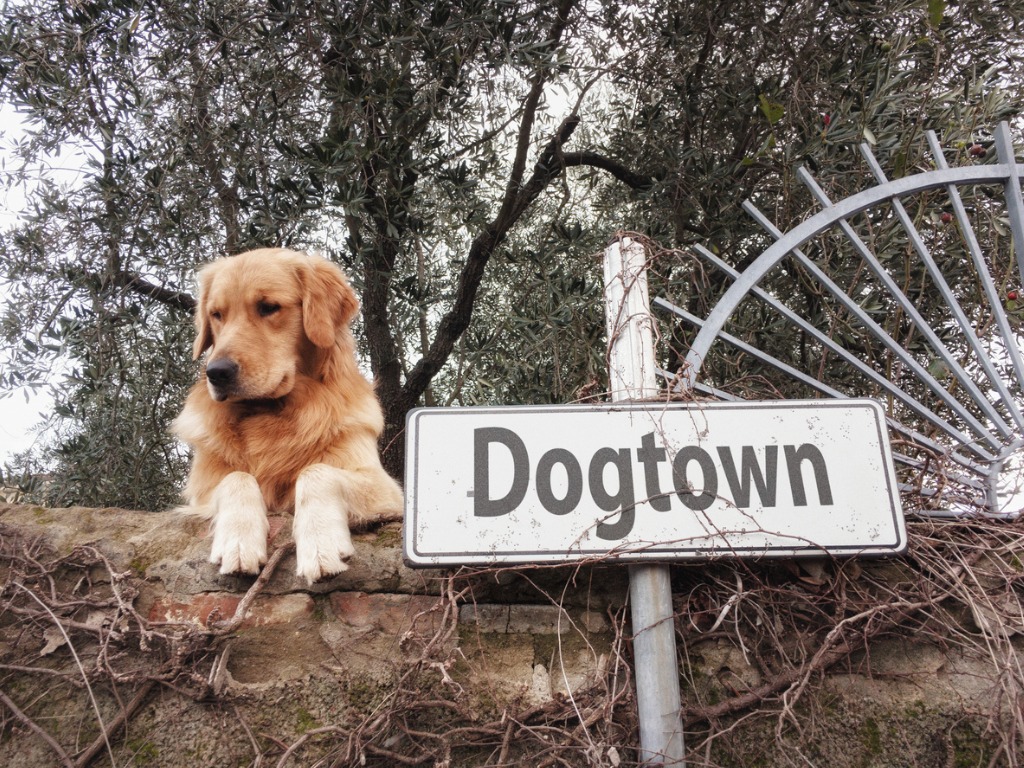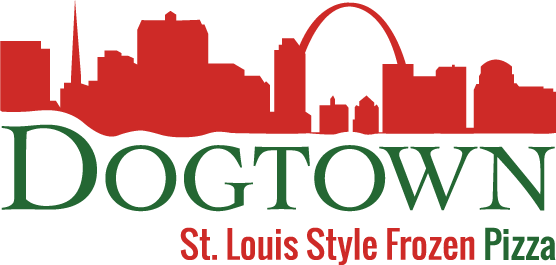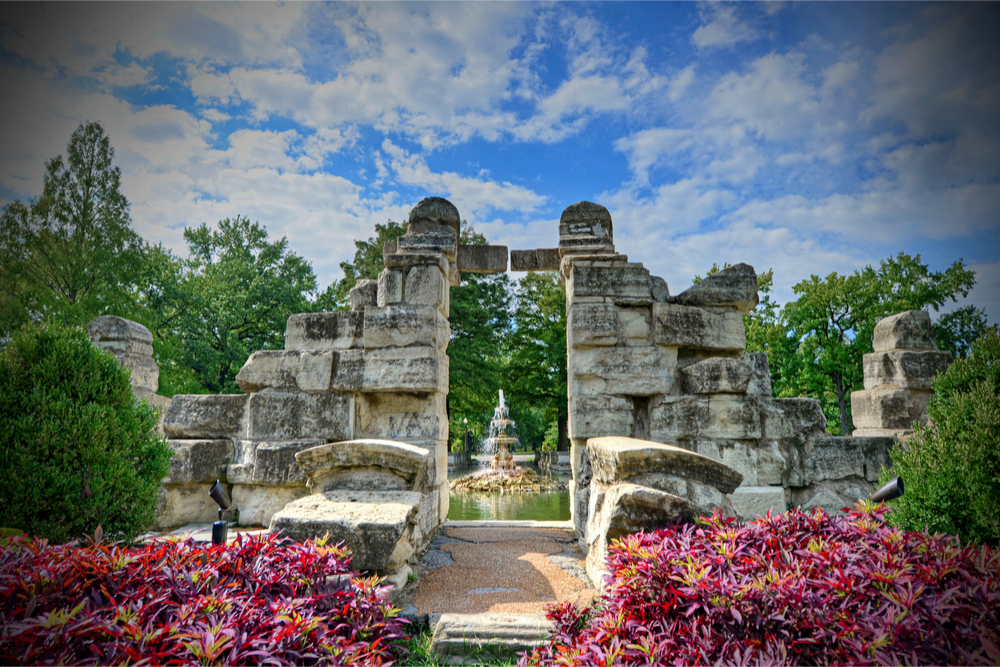The History of Dogtown, St. Louis

Located south of Forest Park, you’ll find the historic St. Louis neighborhood called “Dogtown.” That vivid and dramatic name is your first hint that the neighborhood itself was born of a vivid and dramatic history. But what is fact and what is fiction? And what’s up with that name? So enjoy this history of Dogtown, St. Louis, the neighborhood our pizzas are named after!
How Did Dogtown Get its Name?
Trick question: No one knows for sure! There’s an old story you’ve probably heard at some point claiming that the term “dog” was incorporated into the name because it’s where a group of indigenous people who lived in the area in 1904 hunted dogs in the neighborhood for use in ritual ceremonies.
It’s a popular story, but no historical records exist to corroborate that this happened—and there are historical records showing the neighborhood was already called “Dogtown” going back at least as far as the late 19th century.
Another popular explanation—one that seems more likely—is that the name may have originated from the watchdogs that protected shacks built by displaced miners. The miners were evicted when the city bought the land their housing was on and developed it into Forest Park.
Having no other affordable housing options, the miners built their own dwellings in a less desirable area near the mine and railroad. Areas near railroads were vulnerable to being robbed by transients riding the rails, so watch dogs were popular and plentiful in the area, hence “Dogtown.”
Wait, Dogtown Was a Coal Mine?
The area we know today as Dogtown was originally rich in natural resources, such as coal and clay, which were extremely valuable—but only became profitable in the early 1850s when the Pacific Railway laid five miles of tracks from the city into the countryside, which made it possible to transport the coal and clay.
Previous efforts at mining had been stalled to a halt by the difficulty of moving such heavy materials to the waterfront to float out, but the new railroad system made shipping not just financially viable, but profitable enough to finally make the mining operations and brick-making factory financially viable.
So How Big Was the Original Dogtown?
Historic Dogtown wasn’t much of anything by modern standards. The area developed organically as mining companies came in, followed by the miners looking for a chance at stable, well-paying work, followed by merchants selling goods and services in order to feed, house, entertain, and support the men who worked in the mines or at the brick factory.
Most of the residents were immigrants who had come from Ireland, Germany, Italy, France, the Balkans, and elsewhere to the fabled land of America, where any man with enough drive and ambition could come to find a better life.
Near the coal mine, there was a mining camp. In the neighborhood that formed near there were the basics you’d expect in any civilized society in the late 1800s: a butcher, a bakery and general store, a tailor, bar, some modest housing options, and the historic St. James Parish at the intersection of Tamm and Wade, dating back to 1860.
And Then What Happened?
Dogtown grew up! After the mines and the brick-making factory closed down, Dogtown had enough established business to hold its own as a small, local economy that could support its residents just as well as other nearby areas.
At the time of writing this article, Dogtown is an eclectic, historic St. Louis destination: from the local bars and eateries to the gorgeous parks and museums, it’s no surprise that some Dogtown families have been local dating back four or five generations!
Selected Dates in Dogtown Local History
1850s
The Pacific Railroad lays tracks near the clay- and coal-rich area, making it financially viable to ship these profitable resources.
1876
The City of St. Louis buys land to develop into Forest Park, displacing miners who were previously housed there. The miners move to a less desirable area, which becomes known as “Dogtown.”
1889
The first record of the name “Dogtown” being used according to Bob Corbett (the keeper of Dogtown history) was by a young boy in a newspaper article dated August 14th, 1889. That’s five years before the 1904 World’s Fair!
1922
The Hi-Pointe Theater is established, built on the highest point in the city of St. Louis.
1942
Patrick Connolly, an immigrant to St. Louis from County Galway, Ireland opened the Pat Connolly Tavern and worked for two decades creating a local landmark in Dogtown. The tavern changed ownership for a time but is now back in the Connolly family.
1962
St. Louis Community College at Forest Park is established with the mission of making education accessible to all, to lift people up and give them new avenues for success.
1980
The Hi-Pointe Drive-In begins serving mouthwatering burgers, fries and shakes. Now revitalized and featuring a chef-inspired menu using locally sourced ingredients, the only mistake you could make is not visiting this historic burger and sandwich joint!
2006
Rick and Meredith Schaper founded Dogtown Pizza, originally selling pizzas out of their own kitchen! Fast forward to now and Dogtown Pizza is a beloved slice of local history (a slice square cut, obviously!).
Dogtown Isn’t a Place, It’s a State of Mind!
One last thing to know about Dogtown, St. Louis is that it doesn’t technically exist! While we call our neighborhood “Dogtown,” anyone living in Dogtown calls it “Dogtown,” and anyone local to St. Louis calls it “Dogtown,” there’s no official listing of Dogtown in St. Louis’s list of neighborhoods.
Rather than being its own neighborhood, the boundaries of Dogtown actually include a combination of multiple official city neighborhoods, including Clayton-Tamm, Hi-Pointe, Franz Park, Cheltenham, and just a bit of Ellendale to make things more interesting.
So next time you’re in Dogtown, take some time to appreciate the beautiful history on display all around you. From the gorgeously preserved historic neighborhoods, to the Dogtown Historical Society’s commitment to keeping our history alive, to the small businesses that helped put Dogtown on the (unofficial) map—it’s all history in Dogtown, St. Louis!




